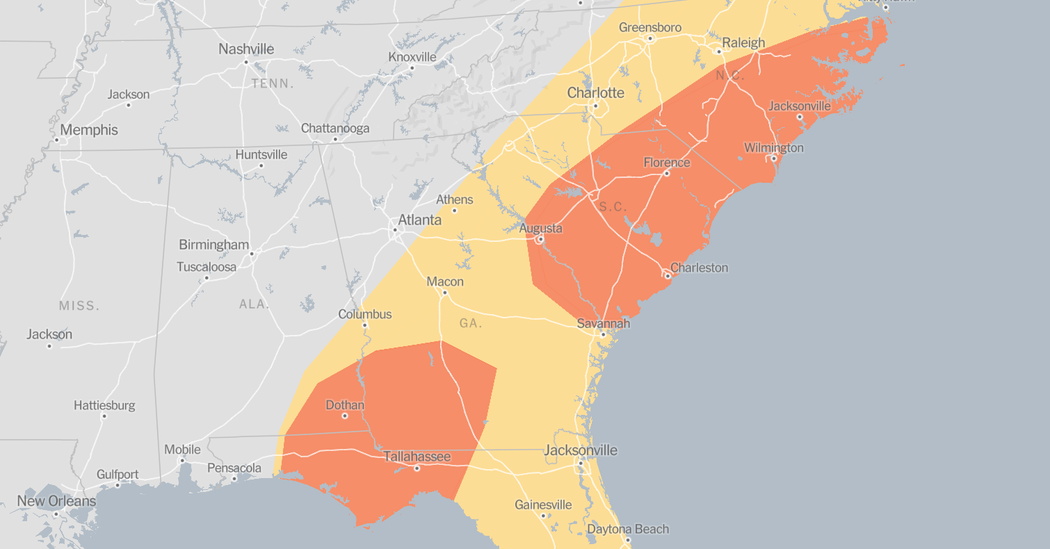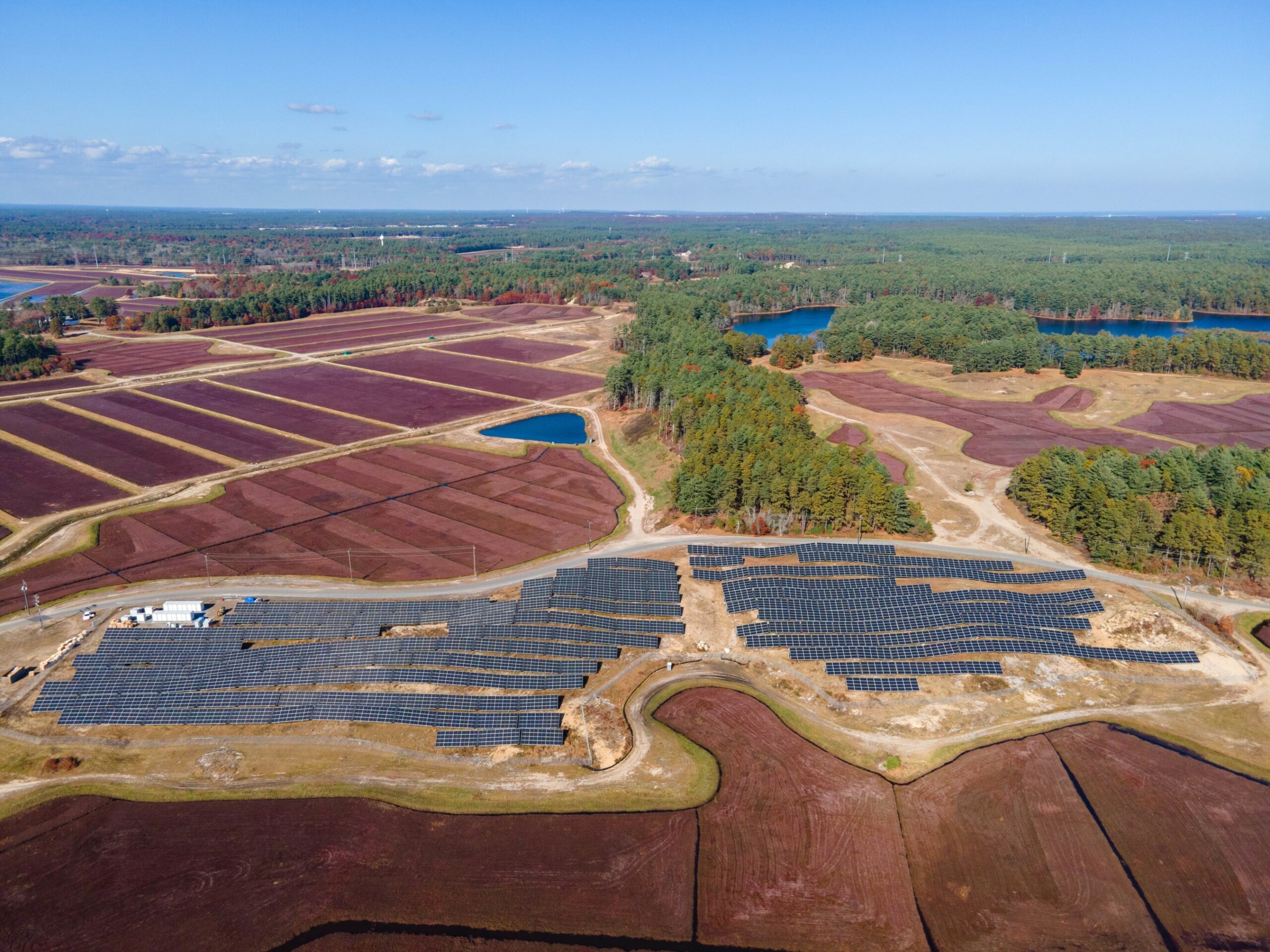
At least three people died as severe thunderstorms, powerful winds and apparent tornadoes ripped across swaths of the southeastern United States on Tuesday, downing power lines and trees, and damaging buildings.
Images circulating online from Panama City, Fla., showed homes whose roofs had been torn off, flattened buildings and impassable roadways after a reported tornado tore through the area early on Tuesday. In some areas north of the Alabama state line, storms brought hail the size of baseballs.
One person was killed and two others were critically injured after a strong storm moved through a mobile home park in Claremont, N.C., just after noon on Tuesday, according to officials in Catawba County.
In Houston County, Ala., an 81-year-old woman was killed when her mobile home was lifted off its foundation, the authorities said. And in Clayton County, Ga., south of Atlanta, one person was killed when a tree fell across a car’s windshield.
Severe weather was expected to continue along much of the East Coast through Tuesday night. More than 22 million people under tornado watches from Florida to Virginia. The National Weather Service cautioned that strong tornadoes were possible in Florida, and that portions of North Carolina and Virginia could see storms with winds of up to 70 miles per hour.
There were at least 10 reports of tornadoes across the South by Tuesday afternoon, according to the Storm Prediction Center at the National Weather Service, though those remained unconfirmed until emergency officials and the Weather Service could survey the damage. The Weather Service also planned to examine storm damage in Claremont, N.C., about 40 miles northwest of Charlotte, to see whether a tornado touched down in the area.
Gov. Ron DeSantis of Florida issued a state of emergency for 49 counties to “ensure that there are no unmet needs following the severe weather” affecting the state. He urged residents to heed the warnings of local officials.
The line of severe storms was expected to move across the Southeast on Tuesday, the Weather Service said, adding that it could cause more “widespread destructive wind gusts,” with speeds of 75 m.p.h. Power outages were affecting some areas, the Walton County Sheriff’s Office said on Tuesday.
Tornado warnings were in place for portions of Florida, Alabama and Georgia, and meteorologists urged people to take cover indoors away from windows and brace for flying debris.
By early afternoon, a tornado threat had moved through North Florida and into south-central Georgia, the National Weather Service in Tallahassee said.
“There are many reports of trees down so be extremely careful on the roads,” it said. It has not confirmed a tornado in Tallahassee.
“It’s going to take a while to clear the whole Southeast U.S.,” said Felecia Bowser, the head meteorologist for the Weather Service in Tallahassee.
In Bay County, Fla., the sheriff’s office urged residents to stay off the roads while emergency personnel rushed to damaged houses to investigate whether people were trapped. The authorities were working to survey storm-hit areas, including an apartment complex that the sheriff’s office said had “sustained extensive damage.” Power lines dangled low by some roadways, while others were obstructed with downed trees, debris and water, the office said.
Schools in Bay County, which includes Panama City, were closed on Tuesday, the school district said, adding that it was still surveying damage to structures.
In Georgia, emergency management officials had warned residents to prepare for storms, saying those in Southwest Georgia faced the highest risk of tornadoes, possibly beginning even before sunrise.
By Tuesday afternoon, more than 39,000 customers, mostly in central and southwestern counties, were without power, according to PowerOutage.us, which aggregates data from utilities across the United States.
In Georgia, schools in 27 of the state’s 159 counties were closed because of the severe weather, according to the Georgia Emergency Management and Homeland Security Agency. It said it was too early for an assessment of any damage.
“The weather system is affecting much of the state, with the most severe impacts thus far occurring in the Southwestern part of Georgia,” the agency said.
The severe weather is part of a weather system affecting much of the eastern third of the U.S. on Tuesday, with heavy rainfall expected from the Florida Panhandle to Southern Maine.
Johnny Diaz contributed reporting.







